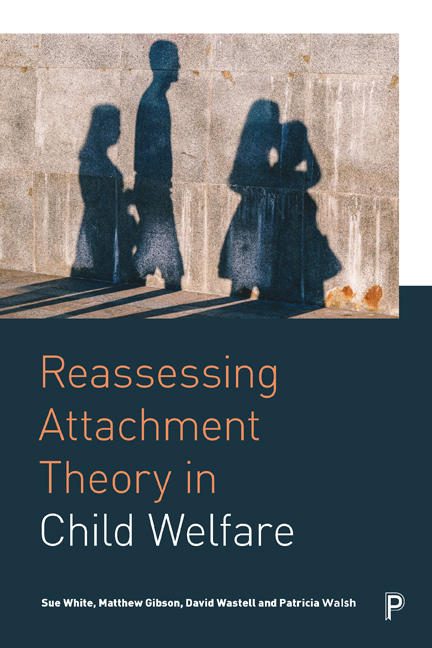Book contents
- Frontmatter
- Contents
- List of Figures, Table and box
- About the Authors
- Acknowledgements
- Preface: Becoming Attached to Attachment Theory
- 1 Love is a Wondrous State: Origins and Early Debates
- 2 Social work and the Attachment Story: a Felicitous Bond?
- 3 Shaping Practice: Prescribing Assessment
- 4 Practising Attachment Theory in Child Welfare
- 5 Exhibiting Disorganised Attachment: not even Wrong?
- 6 Breaking the back of love: Attachment Goes Neuro-Molecular
- Coda: love Reawakened?
- References
- Index
Preface: Becoming Attached to Attachment Theory
Published online by Cambridge University Press: 23 February 2021
- Frontmatter
- Contents
- List of Figures, Table and box
- About the Authors
- Acknowledgements
- Preface: Becoming Attached to Attachment Theory
- 1 Love is a Wondrous State: Origins and Early Debates
- 2 Social work and the Attachment Story: a Felicitous Bond?
- 3 Shaping Practice: Prescribing Assessment
- 4 Practising Attachment Theory in Child Welfare
- 5 Exhibiting Disorganised Attachment: not even Wrong?
- 6 Breaking the back of love: Attachment Goes Neuro-Molecular
- Coda: love Reawakened?
- References
- Index
Summary
In August 2015, the press in the UK reported that scientists in Cambridge had created a robot ‘mother’ capable of building ‘babies’ from mechanised blocks. Analogies with biological evolution were drawn. The robot mother is able to identify the best traits in her children and use these to improve the design of subsequent generations of robots (Griffin, 2015). It is the survival of the fittest.
The mother–infant dyad and stories about the effects of one party on the other underpin some of our most potent and durable myths. Marga Vicedo (2013) begins her compelling review of 20th-century ideas about maternal care, with another robot – this time an adopted, android ‘child’, David, who can be made sentient and ‘human’ through maternal love. The capacity is activated when the human mother, Monica, binds David to her, triggering an imprinting protocol, which irreversibly hardwires the robot child's love for the mother.
The Cambridge robot mother and David, the android child, represent poles of the nature–nurture debate. The Cambridge offspring are perfectible by natural selection – getting the right ‘genes’ and culling the deficient ones, in which their mother is complicit – whereas David is perfected through perfect love. We shall see in due course that these different explanations continue to play out in the contemporary ‘science’ of love and in the attempts of our species to realise aspirations for its own improvement.
In this book, we enter this debate, focusing particularly on the success of another cultural artefact: attachment theory. In the mindset of modern child welfare, ‘secure attachment’ – a strong bond between offspring and their mother – has come to be considered one of the child's most basic needs. It joins a range of ideas about the importance of infancy that have come to dominate professional, and indeed lay, ideas about childhood. As Kagan (1998, p 83) notes:
Every society speculates about the causes of variation amongst its members. Some attribute special power to a person's date of birth or sorcery… A much smaller number have decided that experience during the early years (especially the biological mother's affectionate care) are the most potent force in shaping a life.
- Type
- Chapter
- Information
- Reassessing Attachment Theory in Child Welfare , pp. vii - xiiPublisher: Bristol University PressPrint publication year: 2019

